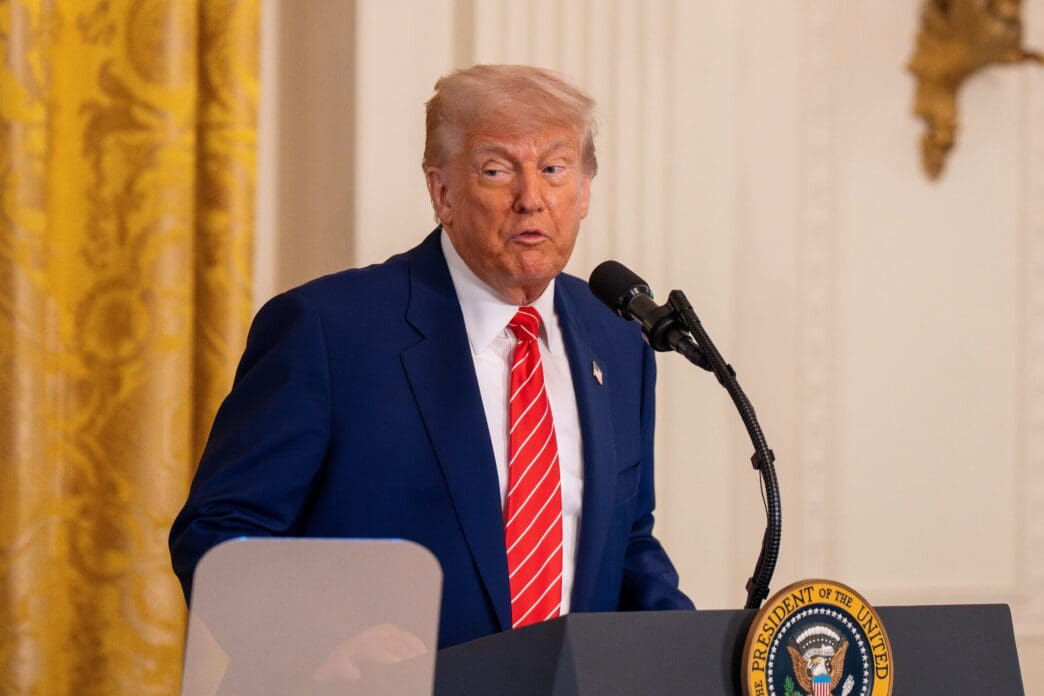Executive Summary
The Story So Far
Why This Matters
Who Thinks What?
President Donald Trump hosted a “Legacy Dinner” for high-dollar donors and investors at the White House on Wednesday night, recognizing their contributions to his $200 million ballroom expansion project. The event, held in the East Room, celebrated the full funding of the 90,000-square-foot facility, which began construction in September. Trump emphasized the project’s importance for showcasing the United States on the global stage.
Event Details and Attendees
The dinner saw attendance from representatives of prominent companies, including Lockheed Martin, Microsoft, Meta, Google, Amazon, T-Mobile, Tether, and Palantir. A White House official confirmed their presence, noting that several of these companies have existing business with or before the federal government.
Other notable guests spotted at the partially press-open dinner included cryptocurrency exchange Gemini co-founders Tyler and Cameron Winklevoss, NewsMax anchor Greta Van Susteren, and former Republican National Committee chair Reince Priebus, who also served as Trump’s chief of staff.
While officials had previously described the event as a fundraiser for the ballroom and other beautification projects, a White House official clarified on Wednesday night that it was a “thank you” dinner. Trump confirmed that the ballroom project is now fully funded, acknowledging the “very substantial money” contributed by the attendees.
President Trump’s Rationale
Trump articulated his vision for the ballroom, stating that it would accommodate “tens of thousands” of people annually and allow American presidents to host events that reflect the nation’s prestige. He recounted past instances of hosting world leaders, such as President Xi and Emmanuel Macron, under temporary tents on the South Lawn, where weather conditions posed challenges.
“The United States is the greatest and most powerful nation on earth, and American presidents need to be able to host events at the White House that reflect the demands of the time,” Trump stated. He also alluded to a collective desire for the new space, saying, “For all those years, they wanted it, and now they’re going to get it, and because of you, they’re going to get it — and me too.”
The president also mentioned his efforts to secure lower prices from contractors for the excavation and noted that various services and products are being donated for the ballroom’s construction. He expressed optimism that the project could potentially be built “for nothing” and come in “under budget.”
Project Scope and Design
Renderings for the new 90,000-square-foot ballroom showcase an opulent design featuring gold and crystal chandeliers, gilded Corinthian columns, a coffered ceiling with gold inlays, gold floor lamps, and a checkered marble floor. Trump assured that any changes would be “in keeping” with the White House’s existing architecture.
The ballroom expansion is the latest in President Trump’s efforts to apply his aesthetic vision to the White House. Earlier this year, he oversaw the paving and decoration of the White House Rose Garden to mirror his Mar-a-Lago patio, and he has also adorned the Oval Office, Cabinet Room, and West Colonnade with gilded features.
Funding and Presidential Authority
In August, Trump had told reporters that “Anything I do is financed by me,” regarding White House projects. However, at the dinner, he thanked the attendees for their considerable contributions, indicating that the project’s funding was largely external.
Recalling his experience as a real estate developer in New York, Trump contrasted the “brutal process” of project approvals with the ease of initiating projects as president. He described being told, “Sir, this is the White House. You’re the president of the United States. You can do anything you want,” acknowledging the “great responsibility” that came with it.








